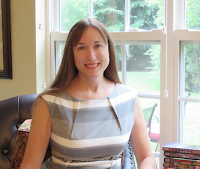Title: Why Spy? The appeal of spies in fiction
 by Jordan McCollum
by Jordan McCollum
Maybe it’s just a guilty pleasure. Maybe it’s an obsession. Maybe it’s simple wish-fulfillment fantasy. But with the popularity of everything from James Bond to Burn Notice, it’s tough to deny the appeal of spies in fiction.
The glamour and the gadgets (and the girls!) are only the beginning of the coolness, however. Sure, spies get the coolest tools on television, but unsurprisingly the reality is a lot less glamorous and entertaining.
But it’s not just the veneer of fiction that keeps us reading and watching spy stories, and I highly doubt much of the audience is interested in the politics and intrigue of made-up people. (We’re scarcely interested in real politics & intrigue these days!)
So why is spy fiction so perennially popular? I think it traces back to the simple facts of the job itself. In real life, most spies don’t directly save lives, catch bad guys, and engage in gunplay. Their real lives are much more quiet and covert, and largely involve trying to get other people who already have access to share or steal secrets.
Secrets. Even in real life, spies trade in secrets every day. And that’s a big part, I think, of the subconscious appeal of the spy. Most people have a negative connotation with keeping secrets. We might keep confidences, but keeping secrets, it seems, is when other people don’t tell us something we almost have a right to know, something important.
 |
| Me having fun, freshman year of college |
When it comes to spies, though, keeping secrets is the honorable thing. They pledge their lives to keeping secrets—and with these secrets, lives can hang in the balance.
Sometimes spies must even keep secrets from those they love—even big secrets. Like many aspects of the spy life, this is a lot more popular in fiction than in reality. It does, however, happen. From what I hear, the official rule in the CIA’s Clandestine Service is you can tell your significant other about your job once you’re engaged. A story at a CIA training facility goes like this:
After months of training in DC, and several months of more in-depth instruction far away from family and friends, CIA trainees are allowed to bring their closest family members for a family weekend. As part of the weekend, family members are loaded onto a bus for a tour of the Farm facility.One year, the instructor-turned-tour guide clapped his hands and welcomed the family members to the CIA.
One woman leapt to her feet. (In some stories, she’s even holding a young child.) “The CIA?” she exclaimed. “My husband works for the CIA?!”
While that story is probably fictitious, it carries at least an ounce of truth: Spies are expected to keep secrets, even from the people closest to them—and that’s a good thing! For me, that’s one of the most interesting aspects of the job, even more than the fictional glamour and mystique, and even more than the lives they save: it’s the personal costs that can run so high.
What do you think? Do you read or watch spy fiction? Why?
About the Author

An award-winning author, Jordan McCollum can’t resist a story where good defeats evil and true love conquers all. In her day job, she coerces people to do things they don’t want to, elicits information and generally manipulates the people she loves most—she’s a mom. Jordan holds a degree in American Studies and Linguistics from Brigham Young University. When she catches a spare minute, her hobbies include reading, knitting and music. She lives with her husband and four children in Utah.
Visit Jordan: BLOG & WEBSITE | FACEBOOK | TWITTER | GOODREADS
Jordan’s first novel, I, Spy, is out now: Canada’s the last place you’d expect an American spy. But even idyllic Ottawa has deadly secrets—and so does CIA operative Talia Reynolds. There’s only one thing she can’t do: tell her boyfriend Danny about her Top Secret occupation. When her latest target turns around and targets Danny, her schedule isn’t the only thing suffering. To save her secrets and her country, Talia must sacrifice the man she loves. More about I, Spy | Amazon Kobo | direct from JordanMcCollum.com.




